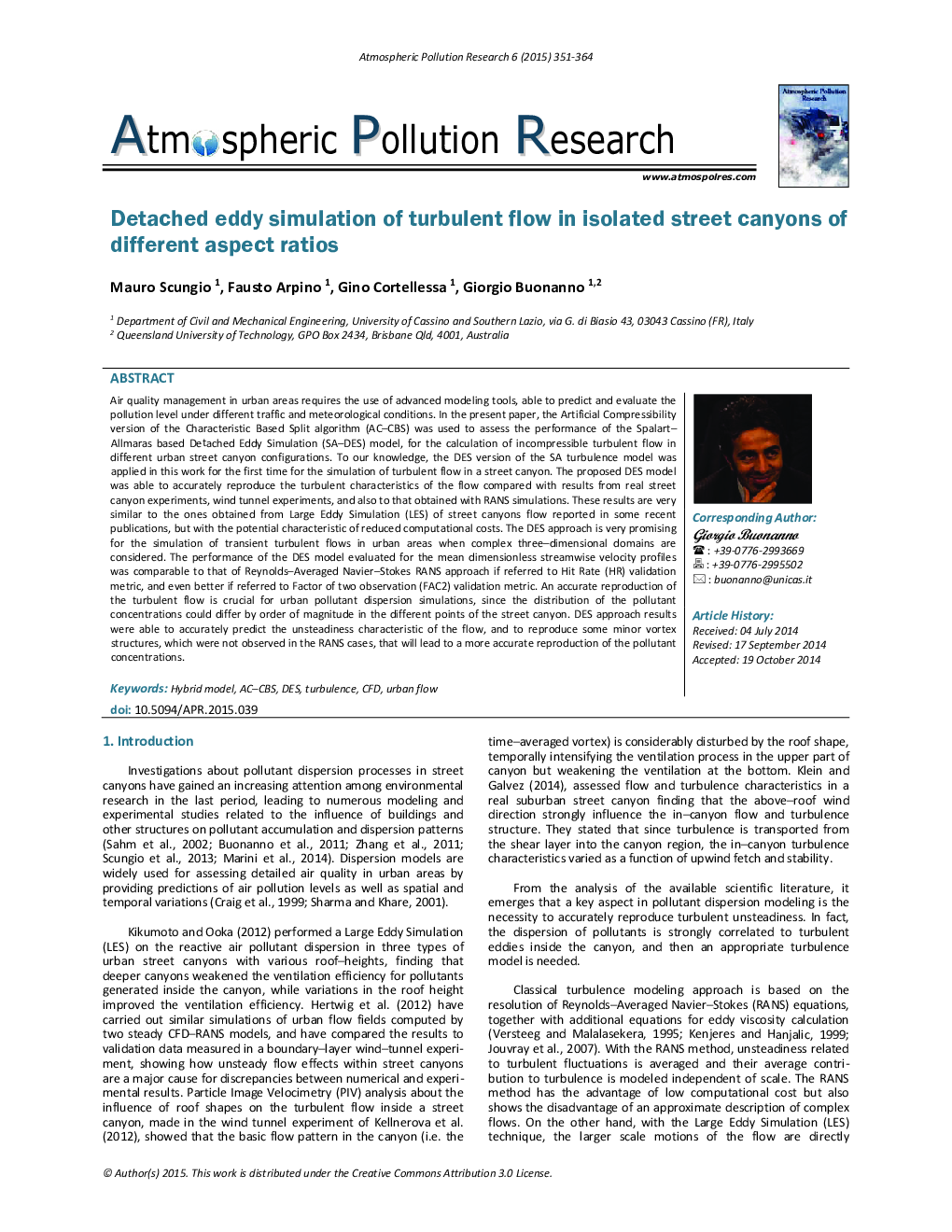| Article ID | Journal | Published Year | Pages | File Type |
|---|---|---|---|---|
| 4434919 | Atmospheric Pollution Research | 2015 | 14 Pages |
Air quality management in urban areas requires the use of advanced modeling tools, able to predict and evaluate the pollution level under different traffic and meteorological conditions. In the present paper, the Artificial Compressibility version of the Characteristic Based Split algorithm (AC–CBS) was used to assess the performance of the Spalart–Allmaras based Detached Eddy Simulation (SA–DES) model, for the calculation of incompressible turbulent flow in different urban street canyon configurations. To our knowledge, the DES version of the SA turbulence model was applied in this work for the first time for the simulation of turbulent flow in a street canyon. The proposed DES model was able to accurately reproduce the turbulent characteristics of the flow compared with results from real street canyon experiments, wind tunnel experiments, and also to that obtained with RANS simulations. These results are very similar to the ones obtained from Large Eddy Simulation (LES) of street canyons flow reported in some recent publications, but with the potential characteristic of reduced computational costs. The DES approach is very promising for the simulation of transient turbulent flows in urban areas when complex three–dimensional domains are considered. The performance of the DES model evaluated for the mean dimensionless streamwise velocity profiles was comparable to that of Reynolds–Averaged Navier–Stokes RANS approach if referred to Hit Rate (HR) validation metric, and even better if referred to Factor of two observation (FAC2) validation metric. An accurate reproduction of the turbulent flow is crucial for urban pollutant dispersion simulations, since the distribution of the pollutant concentrations could differ by order of magnitude in the different points of the street canyon. DES approach results were able to accurately predict the unsteadiness characteristic of the flow, and to reproduce some minor vortex structures, which were not observed in the RANS cases, that will lead to a more accurate reproduction of the pollutant concentrations.
